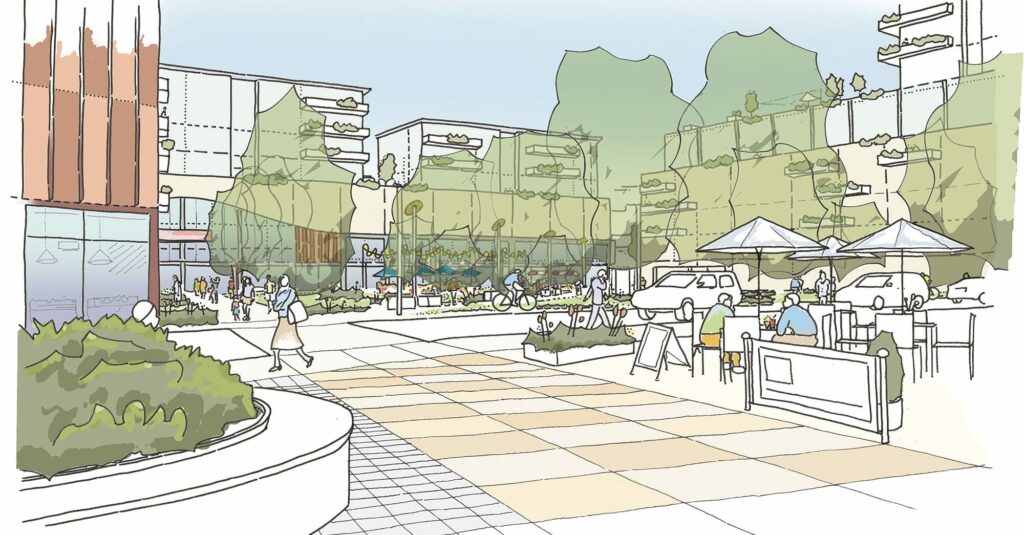What’s wrong with our high streets? Everywhere you look, our traditional ‘high streets’ are in decline – from Queen Street to our local suburban centres and even across parts of provincial New Zealand.
Many are old and tired and often defined by failed ‘mom and dad’ retail ventures, derelict buildings, unloved public spaces and an increasing homeless population – all despite local government spending a fortune on street beautification and renewal projects over the past 10 years in numerous communities.
So what’s the problem? Covid-19 and the transformation of retailing is partly to blame. Traditional high street retailers are getting slammed by online shopping, regional malls (that are only getting bigger) and recently, C-19.
But many think our transportation planning is the main issue. Too many cars and carparks (if you are Wellington City) or not enough cars and carparks if you are the Save Queen Street Society (SQSS). So what’s the right answer? Many traditional retailers still want customers to be able to easily drive and park close to their store. While in principle I support WCC’s decision to pedestrianise the Golden Mile in Wellington (maybe not across the full length as mooted), too many cars are not the problem or the answer for that matter.
Queen Street
If you’ve walked down Queen Street recently, there’s no denying it’s pretty bleak – vacant retail shops, temporary site works/pedestrianisation initiatives and an increasing sense of unease for personal safety the further you go up Queen Street from the waterfront. I certainly caution my kids living in Auckland about avoiding it after dark.
Many of the leading building owners and retailers in the Auckland CBD believe the problem lies with Auckland Council and Auckland Transport, who’ve spent years trailing new initiatives, resulting in fewer cars and carparks for visitors to the CBD.
Some feel so strongly they’ve formed the Save Queen Street Society and are taking legal action against the Council who argue that a full redevelopment of the area is underway that’s in line with their CDB masterplan – similar to what’s happening along Quay Street.
The Auckland frustration no doubt comes on the back of over five years of total chaos around the lower CBD with the City Rail Link project closing off several roads and businesses and major projects like Commercial Bay and Quay Street often bringing the roads around this part of the city to a standstill.
The real issue
While Council needs to get on with the renewal works, I don’t think cars and parking is the problem or the answer. And many parties are missing the point.
A common theme across the CBD and many other urban centres is the lack of people actively living, working, learning and ‘playing’. No manner of landscaping or streetscape enhancement will replace the energy that people bring to these places.
If you look at Queen Street, it lacks three fundamental elements to attract people:
- The office buildings are old and obsolete having been replaced by low-rise campus style buildings along the waterfront (Britomart, Viaduct, Wynyard) or by premium international-class office complexes like Commercial Bay. Heritage/boutique office space has its place, but there are very few contemporary office options along Queen Street that will attract large corporate or government occupiers who have large workforces to accommodate, even post the C-19 WFM adjustment
- There are few modern purpose-built apartment or townhouse complexes that appeal to middle to high-income city dwellers. Again there are heritage and budget-driven conversations, including hotel accommodation, but nothing that would compete with the options in and around the Viaduct or Wynyard for outlook, views, amenity and living experience (noting some newer options are emerging nearby like in Albert Street which will help gentrify the CBD – which, in this context, is a good thing in my view)
- The public spaces are not curated or maintained with any care. It is pointless investing in streetscape initiatives when they’re not maintained and curated on a daily basis to create a community feel. Britomart works so well because the owner/manager has set strong design and aesthetic guidelines and meticulously manages, maintains and curates the spaces on a daily basis to create attractive and welcoming areas for the office occupiers, nearby residents and retail customers to use
Part of the solution
The answer is people – the presence of people who activate, curate and breathe new life back into these spaces. But for that to happen, they need a reason for being there.
This requires (among other things):
- Smaller sites/landholdings to be aggregated, with smaller owners clubbing together in consortia type arrangements to create larger development opportunities
- Demolition of older properties to create a mixed use precinct, retaining genuine heritage amenity
- Coordinated streetscaping, transport planning and private development to create boundless urban areas that blend between the private and public domain, as has successfully occurred in Britomart, Wynyard and other precincts
- Breaking up Queen Street into sub-precincts with their own nuance, rather than creating a single street view
- Deliberate curation of the public space, increased security built in to the design of buildings and places, and meticulous maintenance of private and public spaces to create an inviting place
- A first-mover investor/developer to take a leap of faith and develop an anchor offering, to attract new investment and interest
Maybe it just a timing thing – but why have other precincts around the city undergone transformation and Queen Street continues to wain? It’s not about cars, carparks or pop-up installations. It’s about creating spaces where people want to live, work and play. Until this happens, many of the efforts are wasted.



